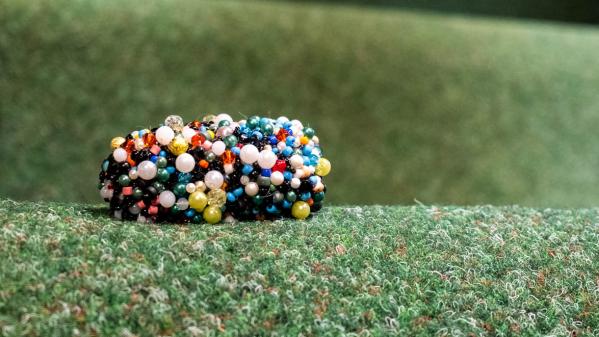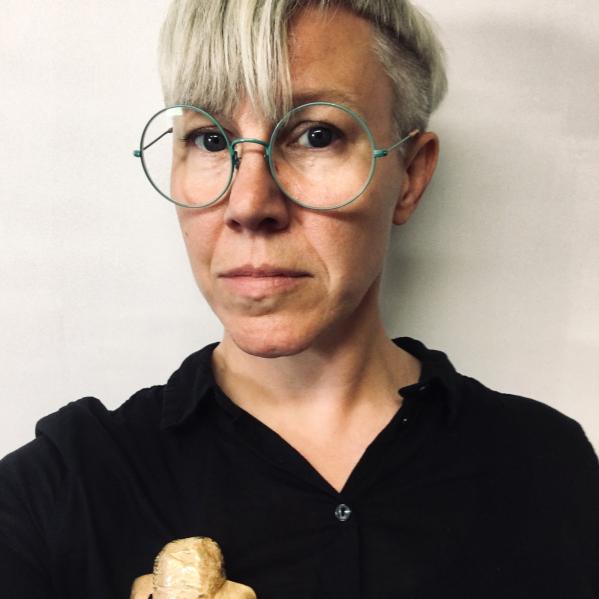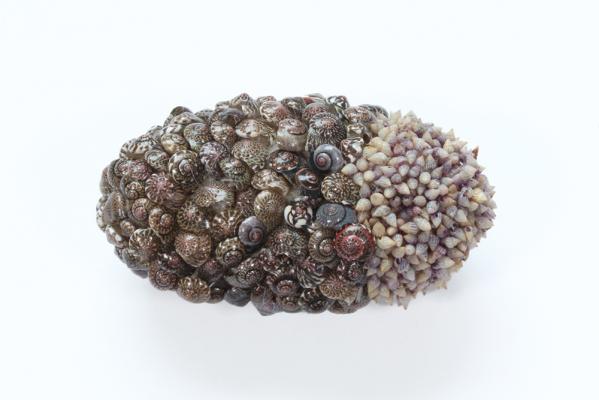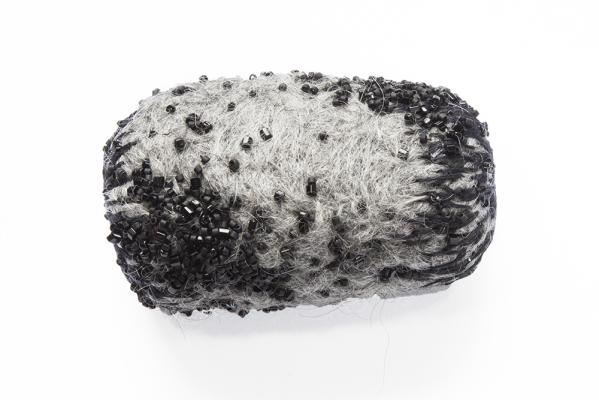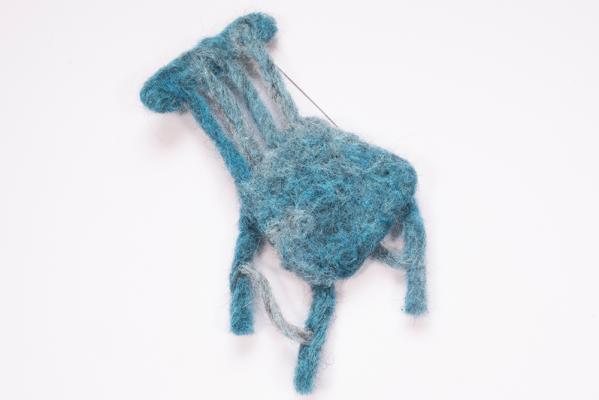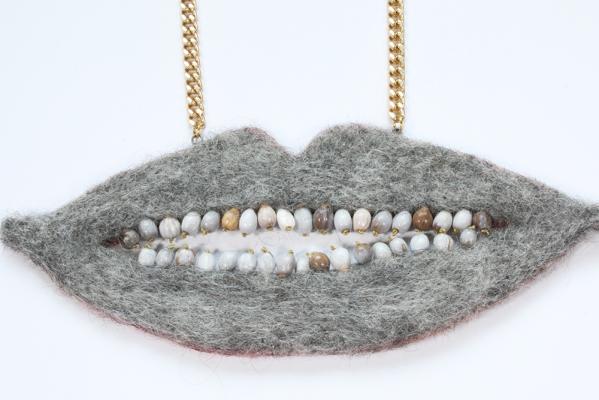A planned scholarship-funded trip to Italy in 2020 had to be cancelled due to the pandemic. The goal of the journey was Niki de Saint Phalle’s sculptural garden “Il Giardino dei Tarocchi” (The Tarot Garden) in Tuscany. The garden contains 22 monumental sculptures, the artist’s interpretations of the Tarot’s Major Arcana cards. It is inspired by such sources as Antonio Gaudi’s Parc Güell in Barcelona and the Palais Idéal in Hauterives, France created by the postman Ferdinand Cheval.
The intended traveller was jewellery artist Elin Flognman. Her cancelled trip gave her the idea of creating her own garden inspired by what she did not get to experience. She has now been working on it for a year, and in her garden we find works of a totally different scale: wool potatoes, spoon forests and amber teeth – all interspersed. The garden is constantly growing and can become everything she wants it to be. Wild. Fearless. Grotesque. Fun.
Ever since she gained her Master’s degree in crafts with a speciality in jewellery art from the Academy of Art and Design at the University of Gothenburg (HDK-Valand) in 2013, the starting point in Flognman’s work has always been daily life and everyday phenomena. Over the years, potatoes have been a recurring theme. The theme emerged after a long and boring encounter in a shopping centre, when she mused: “Everyone is going shopping and everyone is buying the same things – it might not even matter what they are. They could just as well be potatoes.” After she left the shopping centre, she saw a potato lying on the sidewalk like a sign. She took it home and used it as a model for the first work in her series.
In terms of the materials she uses, Flognman starts from the premise that she will not buy anything. Instead, she will use whatever she finds around her – objects that she is given or finds, and ones that she buys to reuse. So far, these have included copper from her parents’ old roof, wood from the garden, and silver from old, unwanted silver jewellery. She then allows the materials to steer the methods she uses. Over the past year she has discovered wool and its shifting properties and enjoys working with it.
During the pandemic Flognman also studied her family’s history and discovered her paternal grandmother’s great-grandfather, Anders Backman, who lived in Åsnebyn in the province of Dalsland. In the 1880s, a collector of folk tales, August Bondesson, travelled around the area searching for stories and legends to record and pass down to future generations. He visited Anders and wrote down ten of his stories, each one more fantastic than the last. The stories were collected in the book Historieberättare på Dal published in 1886.
The fantastic contents of the stories, together with the description of Anders Backman, his thoughts and his tiny cottage surrounded by great forests and spikey gooseberry bushes, have been seeds of inspiration for the plants in Flognman’s garden. In the book, Anders says: “Yes, I am happy to talk about what I remember. I’ve always liked to talk about tales and adventures, because to tell the truth, it has always given me my greatest pleasure.”
